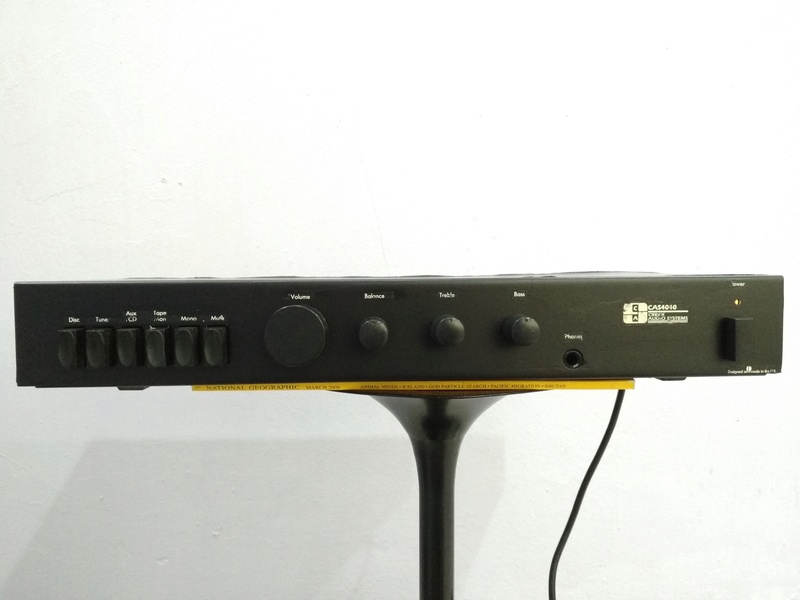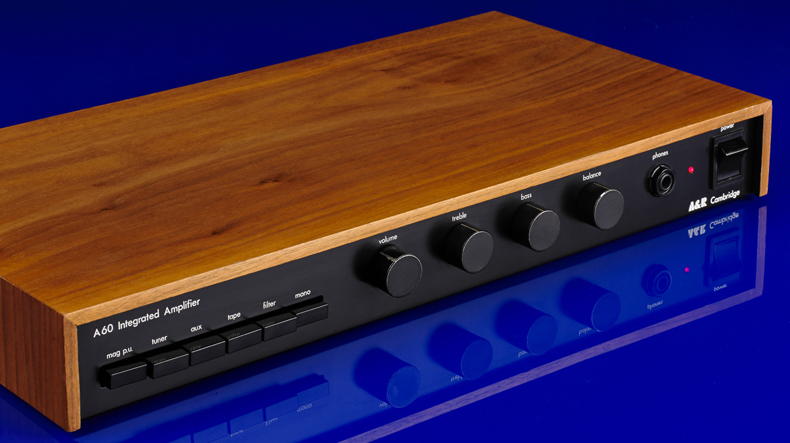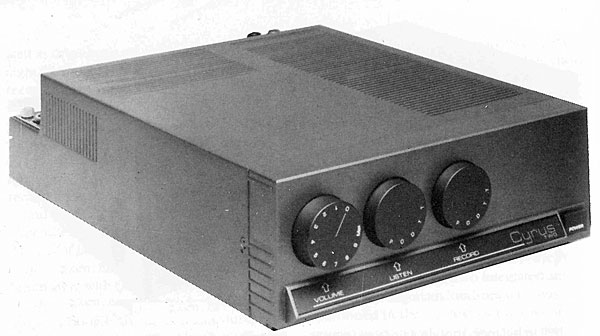The NAD 3020 was undoubtedly the finest hi-fi success story ever reported at the start of the 1980s. This small integrated amplifier had a tremendous impact on the cheap hi-fi market, and for good reason. The infant New Acoustic Dimension, introduced in 1979 and priced – for a brief, fleeting moment – £59, sounded significantly better than anything else at the time, and featured a range of features aimed at achieving the finest possible acoustic output. It included tone controls, an LED power meter, and a volume button, but that was quite basic back then; let’s not forget that the 1970s were known for substandard Japanese amps with many knobs and switches…
The price of the NAD had begun to rise by 1982. True, it was now the 3020A with a few adjustments and somewhat improved sound, but for £109, it felt like the maker had changed its pricing to match the massive demand. It appeared to be getting away with it until a little audiophile-oriented integrated appeared out of nowhere and began stealing sales from the 3020 at a rapid pace. The £99 Creek CAS4040 was stunning; it looked and sounded remarkably identical to an A&R A60 that had ‘shrunk in the wash,’ which was a good thing. A black faced, rather basic design with a wooden sleeve, it featured a deep and warm tone, with plenty of power, similar to the twice-as-expensive A60.
Despite the fact that the Creek appeared to have arisen out of nowhere, its creator, Michael Creek, was a veteran of the industry, having worked for his father’s audio company, the Wyndsor Recording Co. Ltd. He’d started as a tea boy and progressed through the ranks to become a stock controller, component buyer, factory manager, and finally a production engineer. He was a huge fan of hi-fi, especially Wyndsor’s cheap open reel and cassette tape decks, amps, and tuners. Mike eventually left his father’s company to work as a freelance designer before founding Creek Audio Systems in 1981.
The CAS4040 produced 30W RMS per channel of AC-coupled, mostly Class B biased power, but it, like the NAD, could drive ‘real world’ speaker loads well, and it was a popular among Britain’s many independent specialist hi-fi shops. It provided them with a competitor to the mighty NAD franchise, something they would not have had if they weren’t part of the (then) dominant Hi-Fi Markets retail network. The CAS3040 was shortly followed by a tuner, and to everyone’s amazement – tuners aren’t easy to make well – this clean-sheet design sounded fantastic, and the company’s success was assured.
Creek Audio began in Mike Creek’s spare room, as did many other British enterprises in the 1970s and 1980s. However, by 1983, it was producing 100 pieces each week and needed to relocate to a purpose-built facility. Creek began subcontracting at the same time, a practice that it maintains to this day. By 1985, the company was selling 1,200 amps and 350 tuners every month, so it was all hands on deck.
The CAS4040 had a wonderful, sweet, and musical sound, far smoother tonally than comparable Japanese amplifiers, and even the rich NAD sounded steely and mechanical in comparison. Of course, it wasn’t a valve amplifier, but by the standards of its Japanese competitors, which were cerebral and dry in character – and occasionally imbued with the upper midband glare that plagues bad solid-state – it could have been. Although the little Creek was a little opaque and soft in absolute terms, the music appeared to bounce along in a most delightful way.
The CAS4140 was the company’s solution to this, and it accomplished two goals. First, slightly tweaked componentry allowed it to output a true 40W RMS per channel, which was about the bare minimum any eighties amplifier needed to be truly universal; many loudspeakers at the time had extremely low sensitivity (lest we forget, Celestion’s original SL6 produced only 82dB per watt at one meter!). Second, it deleted the tone controls, which were a pointless distraction for most people anyhow; removing them from the circuit allowed for additional intricacy and grip. By 1985, it had Mission’s Cyrus 1 and Arcam’s Alpha 1, as well as Nytech’s CA202 and a newly enhanced NAD 3130, to contend with.
Mike sold Creek Audio Systems just seven years after the company’s meteoric rise began. Mordaunt Short, which had been acquired by the TGI group (which included Goodmans and Tannoy) in 1987, wanted an electronics brand and approached Creek. Mike stayed on as chief engineer and focused on modernizing his low-cost amplifiers and tuners. The S2 version of the CAS4040 was released in 1988, with considerable technical changes and a small facelift that added green fascia lettering. Despite the fact that this was the company’s official color, it didn’t make the amp any less attractive! The 3040 tuner was renamed the 3140, and it received even more rave reviews. Despite its low sensitivity, which required the use of an additional FM aerial to avoid a constant stream of hiss, it sounded delightfully genuine and open — at a time when digital hadn’t yet entered the FM signal chain. This was later superseded by the T40, which was essentially the same. Before a new 5050 range of amps was introduced, the CAS4040 S3 debuted.
Mike is back in charge of his own company, Creek Audio Ltd., as well as the Epos loudspeaker brand, after a tangle of corporate changes. The Evolution 50A, a £750 design that is the spiritual successor of the long-lost CAS4040, is the latest addition to the company’s lineup of superb amplifiers. After all these years, it still doesn’t sound that different — he must be doing something right!







